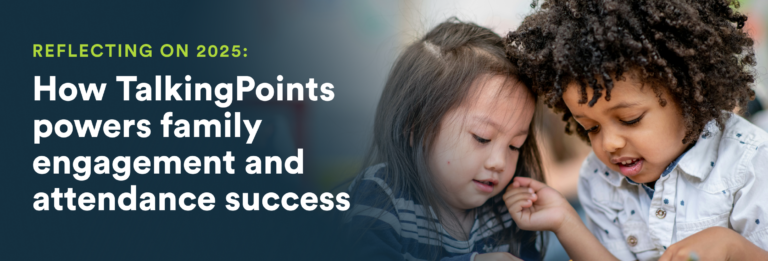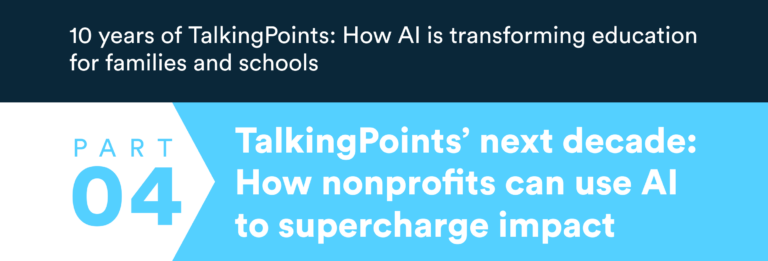Written by Heather Dooley
While schools have resumed a level of normalcy post-COVID, the impact distance learning had on student behavior persists. At the start of the 2023-24 school year, educators named declines in student behavior as one of their biggest concerns. In addition to helping students master core academic skills, many teachers must now re-set behavior norms and rebuild social-emotional capacity in their students. We unpack many of these challenges and review some practical solutions for addressing them in a recent “Lunch & Learn” webinar.
Student behavior: Two years of declines
In a survey released in 2023 by EAB, educators reported significant declines in student behavior and developmental progress over the past two years, and these declines impede teaching and learning and negatively impact teacher morale. The survey found:
- 77% of educators said student behavior is a top concern this school year – up from 61% during the 2018-19 school year
- 84% of schools surveyed found students are developmentally behind, and 68% reported increases in disruptive behavior
Student behavior is also a key contributing factor to lower teacher morale. Many teachers are tired. The past few years of additional stress and workload have taken a toll, leading to record levels of burnout and staffing shortages in some schools and districts.
Growing concerns about student mental health and well-being
For students, too, morale has been part of a shifting mental health picture. Anxiety and depression in kids were already on the rise before the pandemic; in 2021, the American Academy of Pediatrics took the significant step of declaring a National State of Emergency in children’s mental health. Concerns about student well-being have increased in the past two years, with schools and parents alike observing troubling trends and wanting more resources to address them.
- In a January 2023 Pew Research Center survey, 40% of parents with kids under 18 said they are “extremely or very worried that their children might struggle with anxiety or depression at some point.”
- Data from NCES reflects that 79% of schools said they need more support for student and staff mental health, 70% need more training on supporting students’ socio-emotional development, and 60% need to hire more staff.
Some good news: 3 practices that lead to better student behavior
While these challenges can seem daunting, the good news is that some proven, positive, and very doable strategies can help. Chief among these is harnessing the power of families – tapping into them as an extension of the school team to help students get the support they need and foster a healthy, happy school culture.
1) Adopt an intentional focus on relationship-building
As experts on their children, families offer valuable insights to help schools better understand and address student needs. Education leaders can tap into this resource by intentionally adopting practices to build trusting relationships with families at all levels – in the classroom, the school building, in teams and extracurricular environments, and at the district level. Adopt an intentional focus on relationship-building.
Involve the whole team
Facilitate relationships between families and all the staff who support their student’s learning and well-being: teachers, counselors, psychologists, coaches, and even bus drivers. For many families, barriers cut them off from these pivotal resources, including language, access to technology, and knowing what services are available and how to access them.
How TalkingPoints helps:
Our universal family engagement platform offers flexible tools that make it easy to empower all the important school staff who support students to connect with families.
- Roles and permissions tools give admins flexible controls to enable non-rostered staff members to have two-way translated conversations with families in 150 languages like teachers do, giving families equitable access to these vital resources.
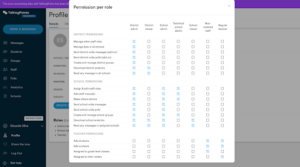
- Admins can also create custom groups to message families, such as for sports teams, bus routes, and after-school programs.
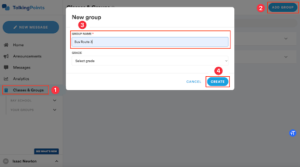
Share regular positive behavior updates
Don’t wait for problems to arise before engaging with families about student behavior. Teachers and families can better navigate tough conversations about student behavior when they’ve established a foundation of trust and positive rapport. One way to do this is to share positive updates about student behavior early and consistently with each family.
Sometimes, even just one message can make a difference. Not only does this lighten the workload for the teacher, but it also gives them the satisfaction that their effort had an immediate, positive impact on that student.
I enjoyed being able to chat with parents in their native language. My favorite thing was how one text changed a student’s behavior almost immediately. – MA middle school teacher
Sharing good news with families can also improve student attitudes about learning. Equipping families with better information leads to more productive conversations at home, making students feel more motivated and engaged in their learning. This is where the name “TalkingPoints” originated: Instead of the classic exchange – “What did you do at school today?” and the reply, “Nothing.” – better-informed families can better engage with their students.

Teacher-family communication is generally positive – except when about student behavior
A recent analysis of 40 million messages sent between families and schools on the TalkingPoints platform revealed that while most conversations were positive in tone (a best practice!), behavior and participation discussions were far less likely to be so.
- Conversations about academics, homework, and attendance were positive 87% or more of the time.
- However, conversations about attendance were only positive 57% of the time, which could mean that these conversations happened when there was a problem.
Lighten the load for staff with time-saving tools
Make it easier for staff to keep up a cadence with families with tools like Templates and Polls.
Templates, including “Positive messages” category
- TalkingPoints templates offer pre-written messages teachers can quickly access, customize, or create and save their own.
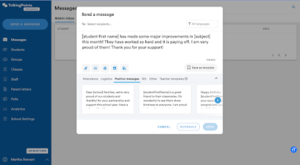
TalkingPoints Polls
- TalkingPoints polls are a great way for teachers or administrators to learn from families quickly. They offer a quick, accessible way for families to share their feedback and a great alternative to lengthy surveys that can be taxing for families to complete. Poll questions and answers are translated, and results are aggregated in a dashboard administrators can use for quick insights to guide decisions.
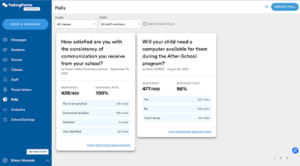
2) Determine the best methods of contact
Great engagement culture centers families. Rather than talking at families — pushing out information to them, we’re connecting with them, learning from them, and having that two-way partnership. Humanizing these interactions by putting a face or voice behind the message helps build the relationship.
Avoid information overload
Busy families tune out when they receive too many messages in too many places. When information is shared on too many channels – emails, robocalls, texts – families can get overwhelmed. Start by working to understand and honor how families in your community best consume information. For example, working families can’t always answer the phone during the day, and for those who don’t speak English, a phone call or robocall can cause stress and confusion. Many families don’t check email frequently or even have an email account, so information can easily get lost.
Share information in one consistent channel
Learn from families how they consume information and then share it in one consistent place. Audit communications to ensure families aren’t over-inundated and prioritize the information families most want and need.
Nowadays, parents appreciate the ease of using text to communicate with teachers. It’s fast and the response time is better, especially when I try to contact them at work and they are not allowed to talk. Being allowed to text with parents in their primary language enables parents to reach out more. – Middle School Teacher, San Diego, CA
How TalkingPoints helps:
Removing technology barriers
Mobile phones are ubiquitous for families, which is why TalkingPoints centers around opt-in, text-based messaging. Families don’t need wifi or a smartphone to engage with their schools; no downloads or sign-ups are required. Getting started is as easy as receiving a text from their child’s teacher or school and responding – all in their home language. Teachers appreciate that they can more easily connect with families, including some they’ve never been able to reach before. Families can also choose to consume TalkingPoints messages within our free mobile app if they have limited text data or want additional support, log in on their computer, or get an email. But by centralizing communication, we’re simplifying things for families and empowering them to engage in the best way for them.
Streamlined communication with mobile-first access

Humanize and personalize communication
Warm up communications and offer more personalized outreach to families by using audio messages translated into family home languages or videos with translated captions.
Videos with translated captions

3) Remove barriers
Conversations about student behavior can be challenging; having difficult conversations is made harder still when barriers to understanding get in the way.
How TalkingPoints helps:
As a nonprofit, we work to ensure every family can meaningfully engage with their child’s school so that every student has the support they need to succeed. We designed our platform to be intuitive for families and educators alike and to remove barriers, such as language, literacy, and access, so educators and families can partner to help students.
Removing language barriers: Best-in-class PK-12 translation
While not the only barrier, language is significant in many school communities. Communication isn’t equitable if it isn’t understandable for all families, so we invest more deeply than other platforms in offering the most accurate PK-12 translation solution available, with support in 150 languages…and counting. Our proprietary translation solution blends neural machine translation with custom machine learning models supported by artificial intelligence, human translation, and embedded education glossaries that put words with multiple meanings in their education context. Our solution is continuously improving based on always-on data inputs from our platform, users, and human translators.
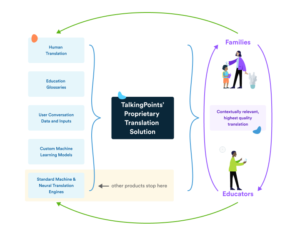
And 150 is a big number. Many languages we support are low-resourced, meaning many people do not speak them. For most platforms, the cost to support translations for a small population isn’t worth it from a return on investment standpoint. And as a nonprofit, we measure ROI a little differently. We measure our success – and our funders invest in us – for our impact on student outcomes. So, for us, “ROI” is students succeeding – regardless of their family’s background or the language they speak.
Remove literacy and understanding barriers
Technology access and language are just two of many barriers we address in our platform; varied literacy levels and understanding of the U.S. education system are others.
- For teachers, ‘Readability flags’ alert them when a message might exceed some family literacy levels and pair this with suggestions for simplifying the message.
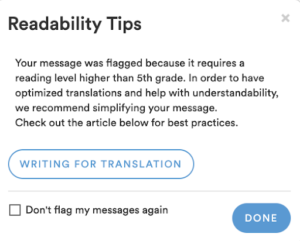
- For families, the ”Ed101” tool in our free app provides quick one-click access to in-message definitions of unfamiliar education terms, like “field trip” or “assessment.” Speech-to-text and text-to-speech support for app users also help address literacy or access barriers.
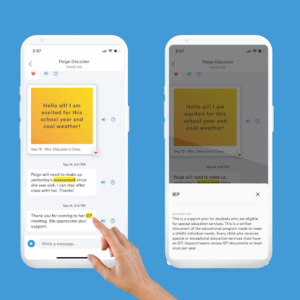
- For families and educators alike, one-click “help me understand” support within our apps offers human translation of a message that didn’t quite make sense the first time, which can happen when spelling or grammatical errors are part of the original text.
The power of family-school partnerships in supporting student behavior and achievement
It’s powerful to see the impact that equitable, accessible solutions have on enabling families to engage with their child’s school and teachers and how this can impact student behaviors and attitudes about learning, school, and the future. One of our high school teachers sums it up beautifully:
One mother told me that she felt like she was a part of the school for the first time because she finally understood what was happening. Using TalkingPoints wasn’t just about sending messages; it was about fostering a sense of belonging and community. It was about showing my students and their families that we care about them, that we respect their culture and language, and that we are all partners in education. – NJ high school teacher
The power of partnership goes beyond just helping the individual student – it helps create the kind of school culture where everyone belongs and has a voice, which can make a real difference in the lives of everybody involved – the student, their family, the teacher, and the broader school community, and can be a critical tool for helping students succeed.
About TalkingPoints
TalkingPoints is an education technology nonprofit that drives student success by removing critical barriers to equitable family-school partnerships, such as language, time, mindsets, and capacity. Ten of the country’s twenty largest school districts trust TalkingPoints to create a district culture where all families, no matter their background, can engage with their schools. Our simple, intuitive family engagement platform offers the highest-quality human- and AI-powered two-way translated communication available — in 150 languages and counting. Named by Common Sense Education as “the best overall family communication platform for teachers and schools”, TalkingPoints leads to higher test scores and lower absenteeism, as shown by rigorous causal research that meets the ESSA Tier 2 standard of evidence. To learn more, view our TED Talk or visit talkingpts.org

